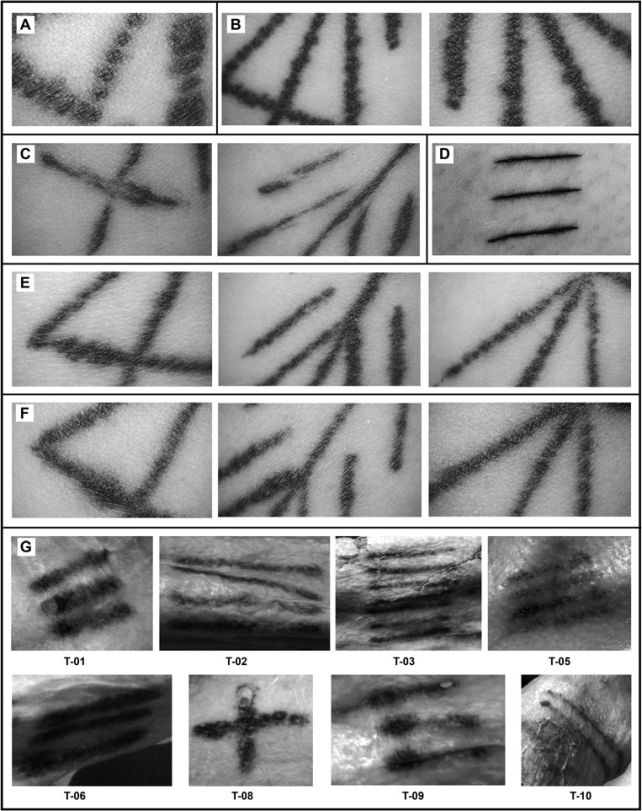A research team consisting of archaeologists and a professional tattoo artist has finally unlocked the secrets encoded onto the skin of Ötzi The Iceman. Arguably the world’s most famous prehistoric corpse, Ötzi’s body was covered in tattoos, yet until now scientists were unsure how the markings were made on the old geezer’s skin.
Thought to have lived and died around 5,200 years ago, Ötzi and his tatts provide the only solid evidence for body inking during the European Copper Age. “Among his various attributes, the Iceman exhibits some of the world’s oldest preserved tattoos, consisting of sixty-one carbon pigment marks on his abdomen, lower back, lower legs, and left wrist,” write the authors of the new study.
Abstract and schematic in nature, these designs “consist of nineteen groups of parallel or intersecting linear marks… predominantly aligned to the long axis of the body.”
First noticed by researchers shortly after Ötzi was discovered in a melting glacier in the Alps in 1991, these tattoos have sparked numerous theories, none of which had been corroborated until now. For instance, it has largely been assumed that the markings were made using an incision technique, whereby the skin is first cut before pigment is later rubbed in.
Noting a lack of evidence to support this hypothesis, archaeologist Aaron Deter-Wolf from the Tennessee Division of Archaeology teamed up with tattoo artist Danny Riday in order to analyze the healing patterns of four ancient tattooing techniques. During these experiments, Riday repeatedly tattooed himself using eight different tools before comparing his new tatts to those on Ötzi’s skin.
“Among these tests, an eyed bone needle was used for subdermal tattooing, the tip of an obsidian flake was used for puncture tattooing, and a separate obsidian flake was used for incising tattoos,” write the study authors. “Single-point copper and bone awls were used for hand-poke puncture tattooing.”
Documenting the characteristics of each type of tattoo as they healed over the next six months, the team noticed that “tattoos created with different tools and techniques exhibit distinctive physical traits.” For instance, “Incised tattoos exhibit firm, clear margins, and distinctive tailing at one or both ends of individual lines.”
Contrary to the popular narrative, these incision hallmarks did not match the properties of Ötzi’s tattoos. Instead, the authors found that “the physical structure of the Iceman’s tattoos, including stippling, line widths, rounded ends, and diffusion of pigment along the edges are all strongly evocative of puncture tattooing using a single-point hand-poke tool.”

A comparison of Riday’s tattoos (A-F) to Otzi’s (G).
Image credit: Deter-Wolf et al./European Journal of Archaeology
“Of the implements tested during our experimental study, the Iceman’s marks compare most favourably with tattoos created using a bone point or copper awl,” they write.
Seeking further validation for their findings in the archaeological record, the researchers explain that copper awls are among the most commonly identified artifacts from this period in European history, especially in the part of the Alps Ötzi called home. Traditionally, these have been interpreted as leatherworking or weaving implements.
However, as Riday’s new body art demonstrates, these ancient tools may also have been used as prehistoric tattooing needles.
The study is published in the European Journal of Archaeology.
Source Link: Ötzi The Iceman's Tattoos Recreated On Living Skin To Discover How They Were Made